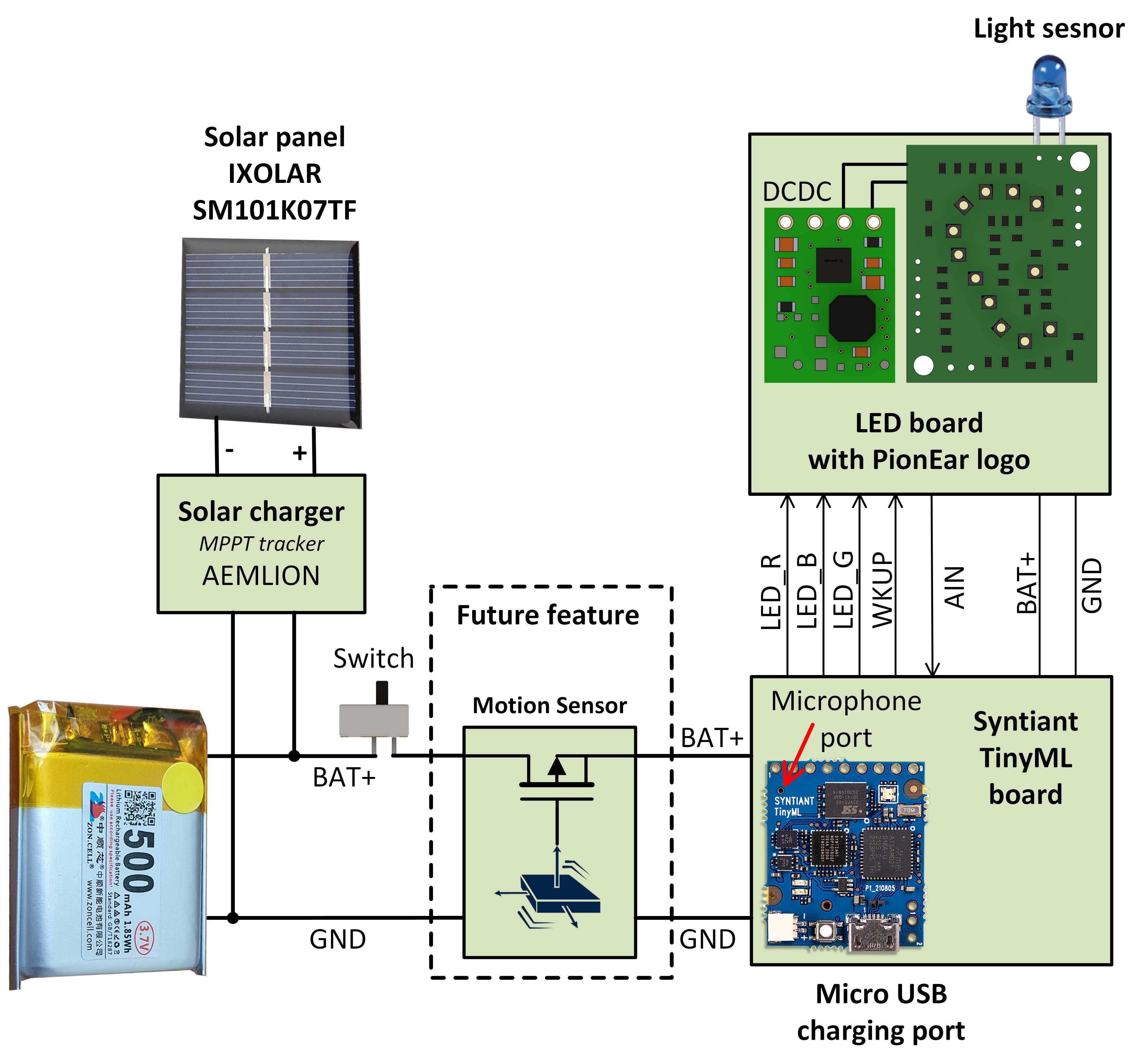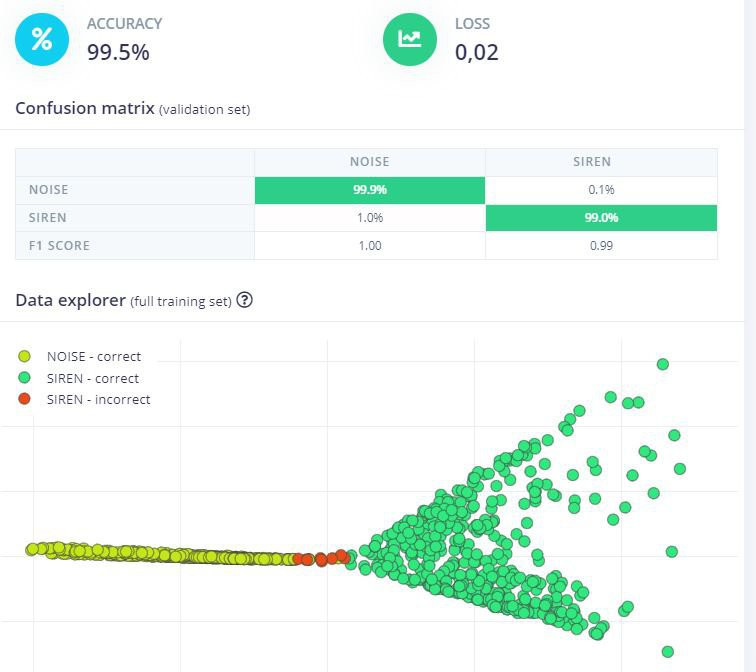The Pionear sensor represents a significant step forward in assistive technology, specifically designed to enhance road safety for hearing-impaired drivers. At its heart, PionEar leverages the Syntiant TinyML board, a platform renowned for building ultra-low-power machine learning applications. This innovative combination brings sophisticated acoustic event detection to automotive environments with minimal energy consumption. The TinyML board, equipped with the Syntiant® NDP101 Neural Decision Processor, is perfectly suited for demanding applications requiring native neural network computation within a tight power budget.
Its integrated microphone and BMI160 sensor readily facilitate configuration for speech recognition, acoustic event detection (AED), or 6-axis motion and vibration applications. The PionEar sensor capitalizes on this versatility, focusing on AED to identify critical sounds like emergency sirens. Trained machine learning models can be effortlessly deployed to the TinyML board via a standard micro USB connection, eliminating the need for specialized hardware and streamlining the development process.
 PionEar sensor HW block diagram
PionEar sensor HW block diagram
Fig. 1) Block diagram illustrating the hardware components of the PionEar sensor system.
Complementing the TinyML board, a custom-designed external PCB enhances PionEar’s functionality. This PCB integrates an RGB LED for distinctive logo illumination, a DC-DC power supply for efficient energy management, and a phototransistor that acts as a light sensor. This light sensor is crucial for adapting the logo’s brightness based on ambient light conditions. By providing an analog input (AIN) to the TinyML board, PionEar intelligently controls the LED brightness, ensuring optimal visibility during daylight while preventing glare at night – a thoughtful feature for driver comfort and safety.
Powering PionEar is a high-temperature li-Pol battery cell (Zoncell LP602530T / 500mAh), directly connected to the TinyML board. To achieve energy autonomy, a solar charger module AEMLION and an IXOLAR SM101K07TF solar panel are incorporated in parallel with the battery. The system’s remarkably low current draw, under 2mA, allows the solar panel to efficiently replenish energy even under typical daylight conditions, not requiring direct sunlight. For added convenience, battery recharging via a micro USB port on the TinyML Board remains an option.
Further enhancing PionEar’s power efficiency, plans are underway to integrate a motion sensor (MEMS accelerometer) and an additional MOSFET switch. This feature will enable the system to detect vehicle movement. When the car is stationary, the power supply to the system will be automatically cut off. This intelligent power management aims to prevent battery depletion during extended periods of inactivity, such as nighttime or when parked indoors, ensuring PionEar remains operational when needed most. This advancement positions the PionEar sensor closer to achieving truly self-sufficient operation, potentially eliminating the need for external charging.
To bring the machine learning capabilities to life, the Edge Impulse platform is utilized for model deployment on the TinyML board. Edge Impulse offers an accessible and intuitive platform for every stage of the ML workflow, including dataset creation and management, feature extraction, model training, testing, and deployment across a wide array of hardware platforms, with full support for the TinyML board. PionEar benefits significantly from this streamlined process.
 ML model accuracy for testing dataset
ML model accuracy for testing dataset
Fig. 2) Accuracy metrics of the machine learning model as evaluated on the testing dataset.
The foundation of PionEar’s siren detection lies in a carefully curated dataset comprising emergency siren sounds and various ambient road noises. Publicly available datasets, such as sireNNet (licensed under CC BY 4.0), served as a starting point. This core dataset was augmented with additional noise and speech datasets to improve model robustness and accuracy in diverse driving scenarios. The complete dataset and the associated ML model are publicly accessible on the Edge Impulse platform here, fostering collaboration and further development. Continuous refinement of the model is anticipated as prototype testing progresses in real-world driving conditions.
Initial real-world driving tests of the latest ML model have yielded promising results. PionEar demonstrates reliable ambulance siren detection with a low incidence of false positives amidst typical road noises encountered while driving. While some challenges remain, such as filtering out music played in the car, it’s important to note that the primary target users, hearing-impaired individuals, may not frequently listen to in-car radio, mitigating this potential issue. PionEar stands as a pioneering solution, leveraging cutting-edge technology to create safer driving experiences for the hearing-impaired community.
